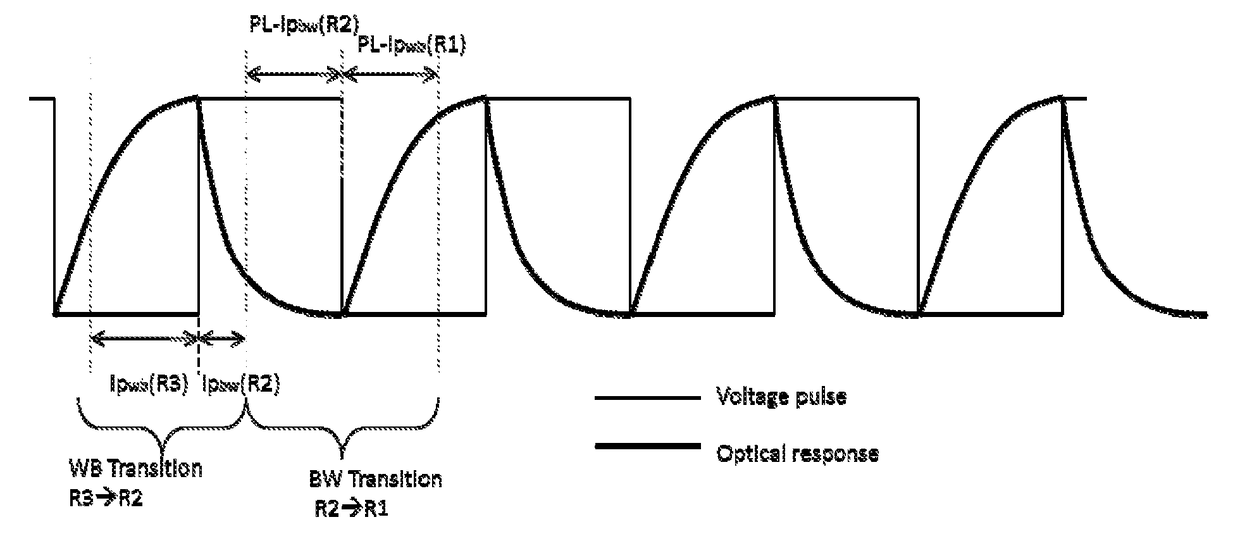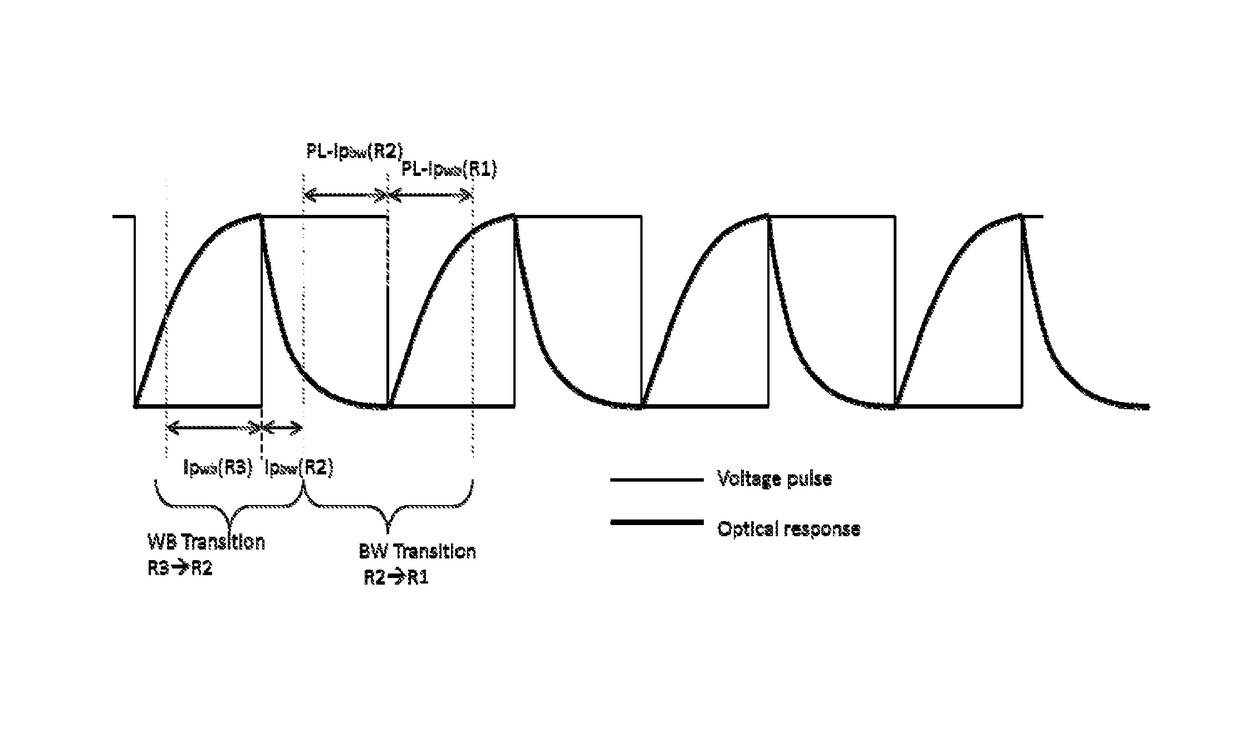Methods for driving electro-optic displays
a technology of electrooptic displays and electrooptic media, which is applied in the direction of static indicating devices, instruments, lenses, etc., can solve the problems of inadequate service life of electrophoretic media, preventing widespread use, and prone to the same types of problems of gas-based electrophoretic media
- Summary
- Abstract
- Description
- Claims
- Application Information
AI Technical Summary
Benefits of technology
Problems solved by technology
Method used
Image
Examples
Embodiment Construction
[0054]As already mentioned, the present invention provides a (ASRBDS) method of driving an electro-optic display having a plurality of pixels, each of which is capable of displaying two extreme optical states and at least one intermediate gray level. Each pixel is driven from an initial intermediate gray level to one extreme optical state and thence to a first desired intermediate gray level. The pixel then remains at this first desired intermediate gray level for a finite length of time. The pixel is then driven from this first desired intermediate gray level to the opposed extreme optical state and thence to a second desired intermediate gray level.
[0055]A complete unique cycle for an ASRBDS may be represented symbolically as:[0056]“R3 State”→“White Rail”→“R2 State”→“Black Rail”→“R1 State”
where R3 is an initial state of a pixel, R2 is the first desired gray level, and R1 is the second desired gray level. The manner in which the drive scheme alternates between the white and black r...
PUM
 Login to View More
Login to View More Abstract
Description
Claims
Application Information
 Login to View More
Login to View More - R&D
- Intellectual Property
- Life Sciences
- Materials
- Tech Scout
- Unparalleled Data Quality
- Higher Quality Content
- 60% Fewer Hallucinations
Browse by: Latest US Patents, China's latest patents, Technical Efficacy Thesaurus, Application Domain, Technology Topic, Popular Technical Reports.
© 2025 PatSnap. All rights reserved.Legal|Privacy policy|Modern Slavery Act Transparency Statement|Sitemap|About US| Contact US: help@patsnap.com


